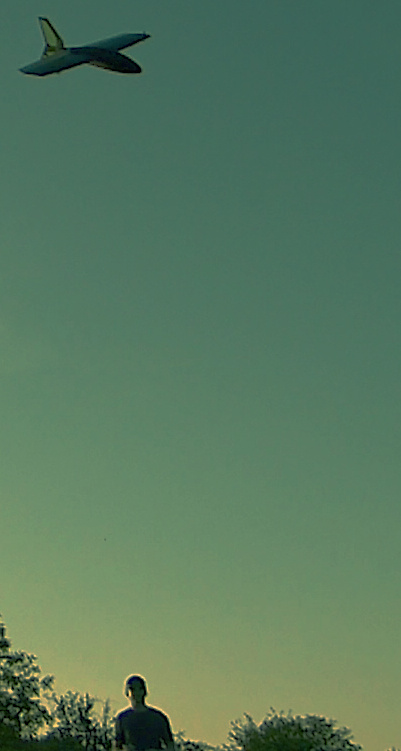
uzumaki (うずまき) means “spiral” in Japanese.
This glider is inspired by two previous modifications (Nurflidl and LIDL Devil) of the famous EPP toy glider from Lidl.
My main motivation of course was to increase the launch height. I’m not the kind of guy who’s known for his physical strength, so I cannot achieve much more than 10 m with standard hand launching. That sucks, especially in flat environments.
To make the Lidl glider ready for discus launching, I had to apply three main modifications that deviate from previous designs:
- Enforce the wings such that they stand the centripetal force, in particular at the launch peg.
- Enforce the fuselage to stiffly connect wings, cockpit, and tail.
- Add a lightweight symmetrical tail.
Additionally, I wanted the plane to be compact and easy to transport. After some experiments with the tail, I ended up with a pretty enjoyable though slightly oversophisticated DLG flying wing.
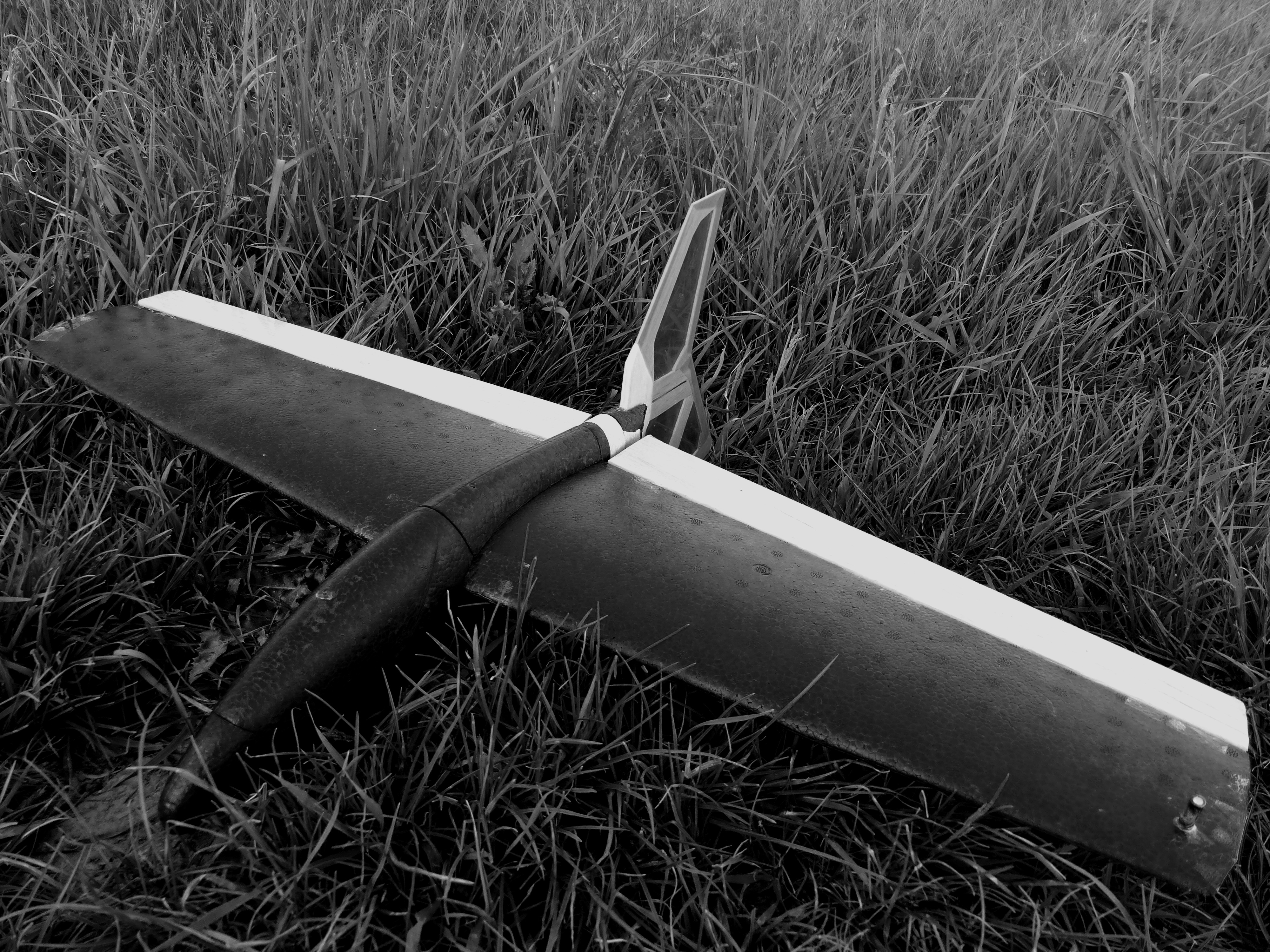
One aspect that I noticed in my other DLG planes is that the tail is always their weak spot. Either it breaks at some point or it causes trouble at the place where it’s mounted to the fuselage. The reason for this is that unlike normal RC planes, DLGs need the tail area to be above as well as below the wing area in order to stabilize the airplane around the z-axis after launch without inducing harmful rotations around the y- or x-axis. The problem is that the tail always hits ground during landing. In the worst case of a “crab” landing, a force that acts perpendicular to the tail area is transferred with high leverage on the point where the tail is mounted. This causes damages I have to repair most often on my DLG planes.
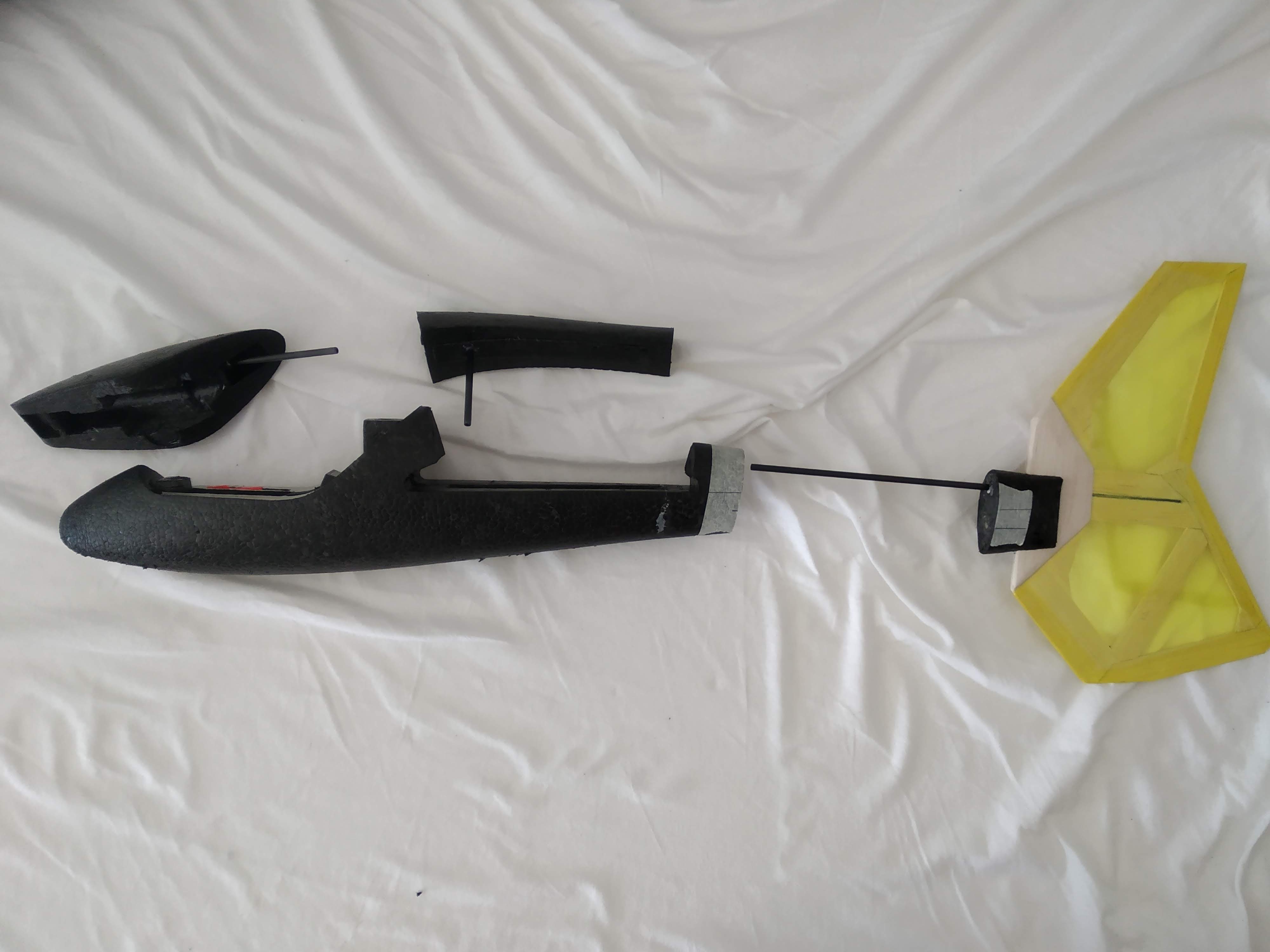
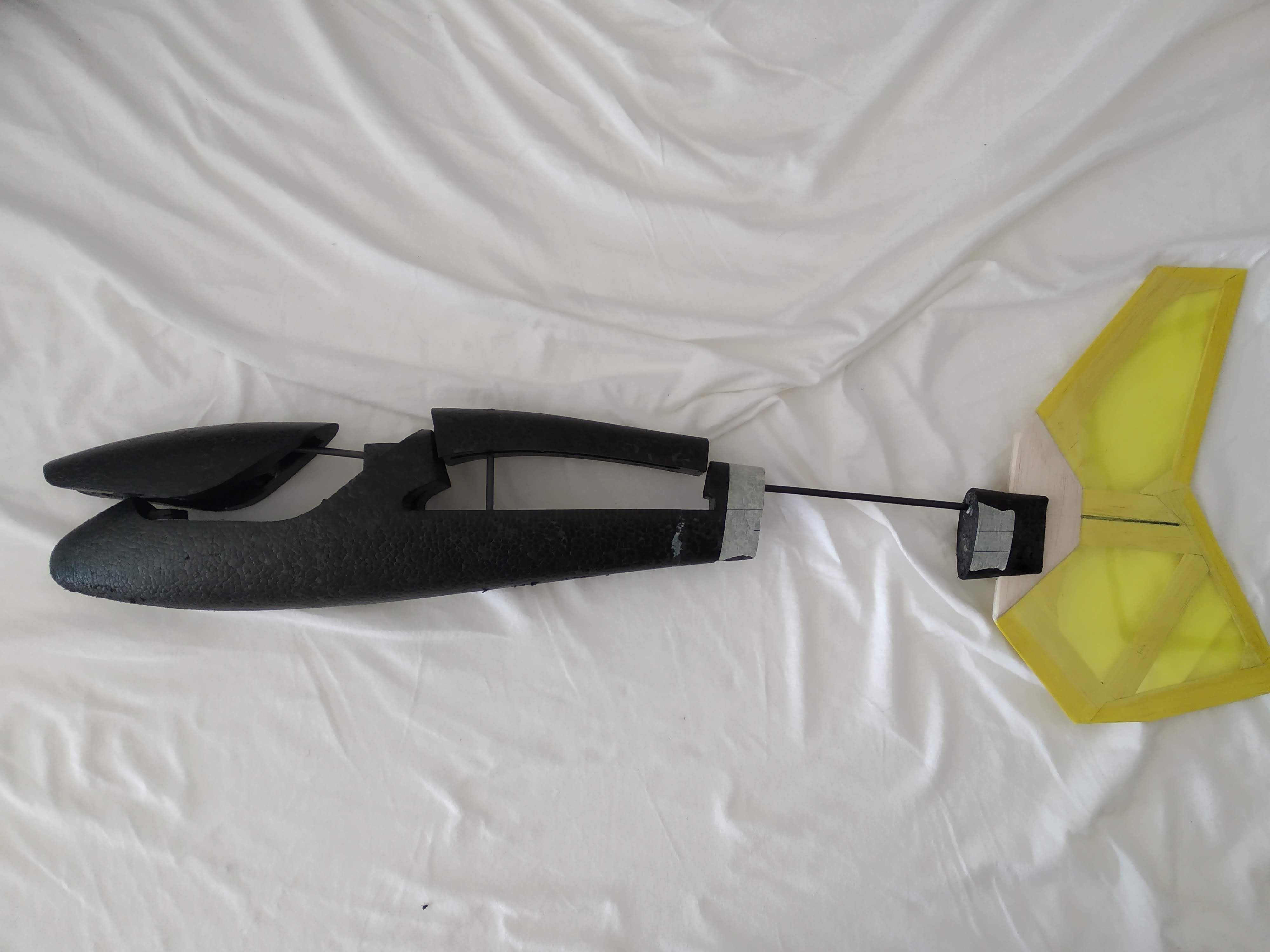

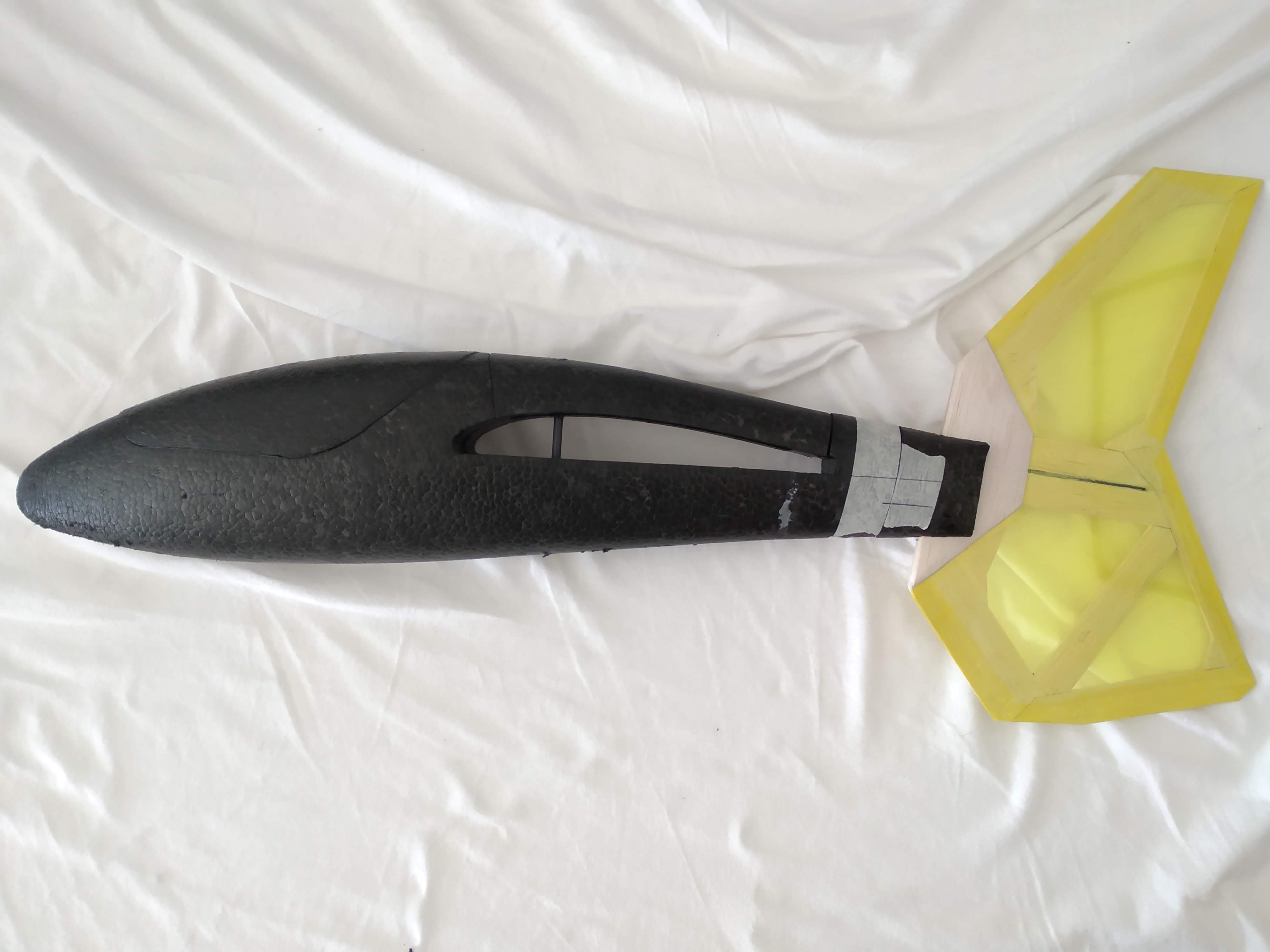
To overcome this, I preserved one degree of freedom for the tail to rotate around the fuselage axis. It’s only being held in default position by a pair of magnets, so it just snaps out during crab landing. This mechanism adds approximately two grams behind the center of mass which has to be compensated by another two grams in the nose but the result is absolutely worth it. I had no damage to the plane so far although it’s rather heavy (260 g) overall.
In 1:27 you can see the post-launch oscillation around the z-axis in slow motion.
what I would change next time
- Make the wings dividable.
The fuselage is already quite sophisticated and it wouldn’t add much more weight or complexity to modify the mechanism to also hold the wing halves together.